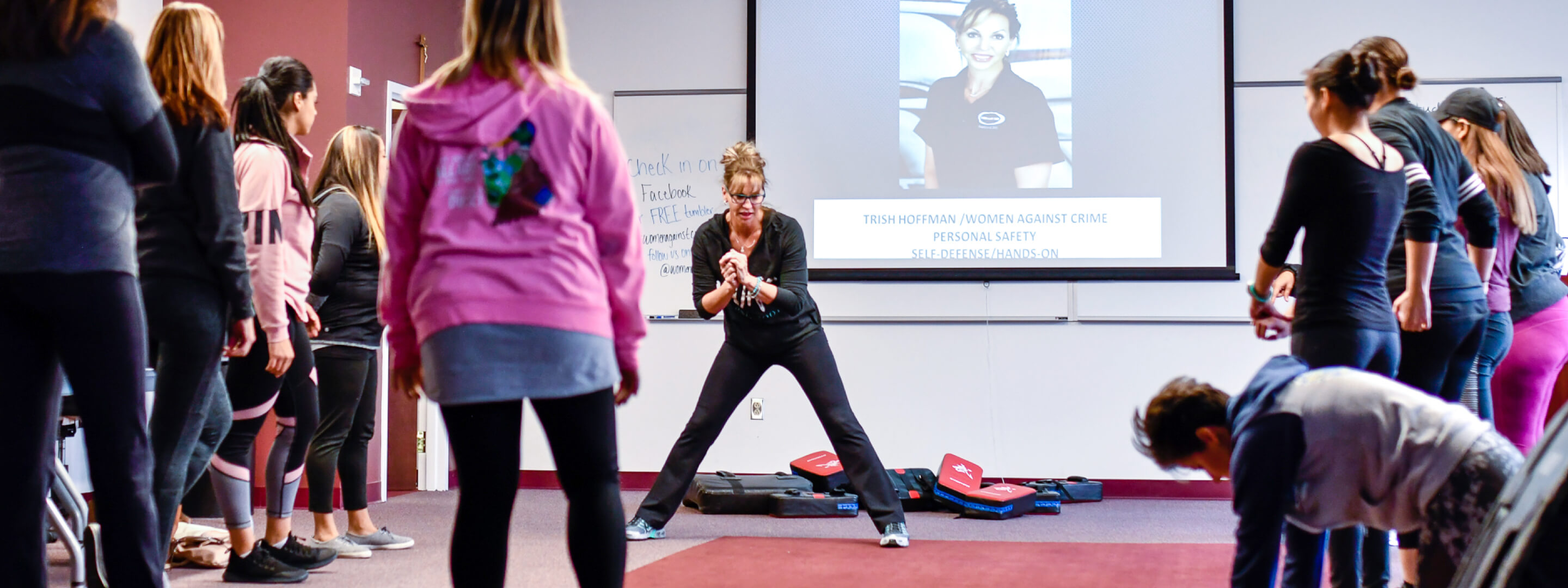Self-defense involves more than just responding to a physical attack. The best way of defending yourself against aggression is by having a plan you can put into action before, during, and after a violent incident. A holistic self-defense strategy involves five basic steps:
Decide
The first step is to decide not to be a victim. It’s important to acknowledge that there are risks in the world and to condition yourself physically and mentally for the reality of violent acts. You can prepare for a possible act of aggression by learning about criminal behavior and how to defend against it.
Train so you can be ready to respond to any form of aggression, and practice reducing your personal risk and avoiding dangerous situations. This could involve taking a self-defense class and making sure you’re practicing habits like always locking your doors and having your phone with you.
Deter
Once you leave an area of safety, it’s important to deter and prevent any acts of aggression. Be aware of your surroundings and listen to your intuition. It’s better to feel stupid or rude and be safe than it is to be nice and become a victim.
Use your body language and tone to project confidence, and be assertive to set boundaries and create a safety zone for yourself. If it’s necessary, use deception to keep yourself safe. Your goal is to repel any potential aggressor and figure out if an aggressor means harm (this is called the “confirmation of bad intention”) while becoming ready for a physical attack.
Disrupt
The event that moves you into definitive action is called the “trigger to act.” Your goal at this point is to disrupt the aggressor’s plans so you can escape. Use any available verbal and/or physical means of attack so you can surprise, shock, or cause injury to him.
This could mean yelling as loud as possible, utilizing nearby objects as weapons, and kicking, stomping, or gouging sensitive areas.
During all this, look for an opening to get away from the attacker (called the “opportunity to escape”).
Disengage
Your actions may cause your aggressor to disengage from the conflict because he’s unwilling or unable to continue. But if not, as soon as you have the opportunity, disengage from the conflict and get away as fast as you can to a safe location. Never corner your attacker, even if you think you have the upper hand. Your goal is to flee as soon as possible.
Debrief
As soon as you’re away from your aggressor, contact the police and get medical attention if you need it. Make sure you preserve any evidence you have. Debriefing involves minimizing long-term physical and emotional effects from the aggression, and you don’t have to do this alone.
We’re Here to Help
Seek legal counsel if you need it, and reach out to people you trust or a licensed therapist for support as you process what happened. It may take some time before you feel safe and have complete peace of mind again, so be kind to yourself as you heal and don’t be ashamed to ask for help when you need it.
https://www.forbes.com/sites/womensmedia/2021/10/02/4-ways-trusting-your-intuition-is-a-superpower/?sh=19bff7c0c8e6




















